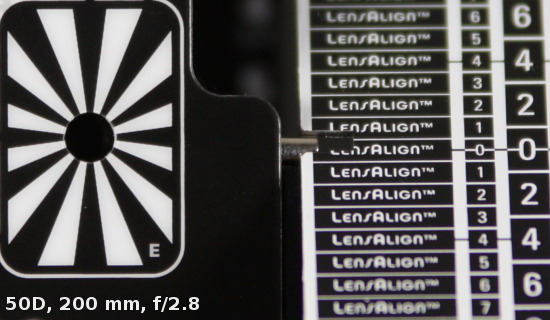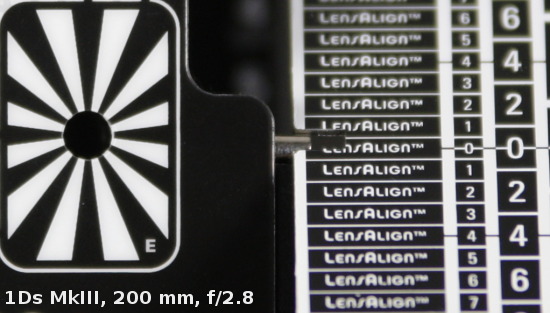Sigma 70-200 mm f/2.8 EX DG APO OS HSM
10. Autofocus
The reason of such a performance is easy to guess. To guarantee good properties of the manual mode the focus ring features quite a wide working range. To run from 1.4 meters to infinity you must turn it through about 140 degrees. It’s quite a lot and the autofocus, although generally quite fast, must take some time to cover that distance. The 70-200 mm f/2.8 class lenses from other competitors feature an autofocus limiter which allows to speed up the mechanism a bit. Unfortunately Sigma decided against the implementation of that solution. Pity…
When it comes to the accuracy of the mechanism, it is really beyond reproach. The lens was far from flawless, because in studio conditions the number of misses reached 4%, but, taking into account the shallow depth of field at longer focal lengths and near the maximum relative aperture, such a result is good.
Please Support UsIf you enjoy our reviews and articles, and you want us to continue our work please, support our website by donating through PayPal. The funds are going to be used for paying our editorial team, renting servers, and equipping our testing studio; only that way we will be able to continue providing you interesting content for free. |
- - - - - - - - - - - - - - - - - - - - - - - - - - - - - - - - - - - - - - - - - - - - - - - -
Since we got the possibility of autofocus calibration in a camera the number of complaints about the bad cooperation between the lenses from independent manufacturers and Canon bodies has decreased. When it comes to zooms some issues remained, though. From time to time it happens that we must still correct different things, depending on the focal length. The Sigma 70-200 mm OS, tested here, was such a case. It worked on the EOS 50D very well at all focal lengths. After attaching it to the 1 Ds MkIII the hard part began, though. We managed to set the lens in such a way that it didn’t miss in the 135-200 mm focal lengths range but unfortunately at 70 mm we observed a slight shift of the focus plane. It wasn’t serious and it could be calibrated moving the AF micro - adjustment slider by five units but still. The combination was not bothersome and in most of cases it didn’t have any bad side-effect in the photos mainly because the biggest depth of field occurred at the shortest focal length.
It’s worth adding, though, that when you buy a Sigma lens, the calibration of its focusing mechanism is done by the company’s service centre free of charge. Unfortunately for some time now the customers have had to cover the costs of sending the camera and the lens off for the work (they must have your camera body to calibrate it and the lens) to the service centre.
 |
 |






